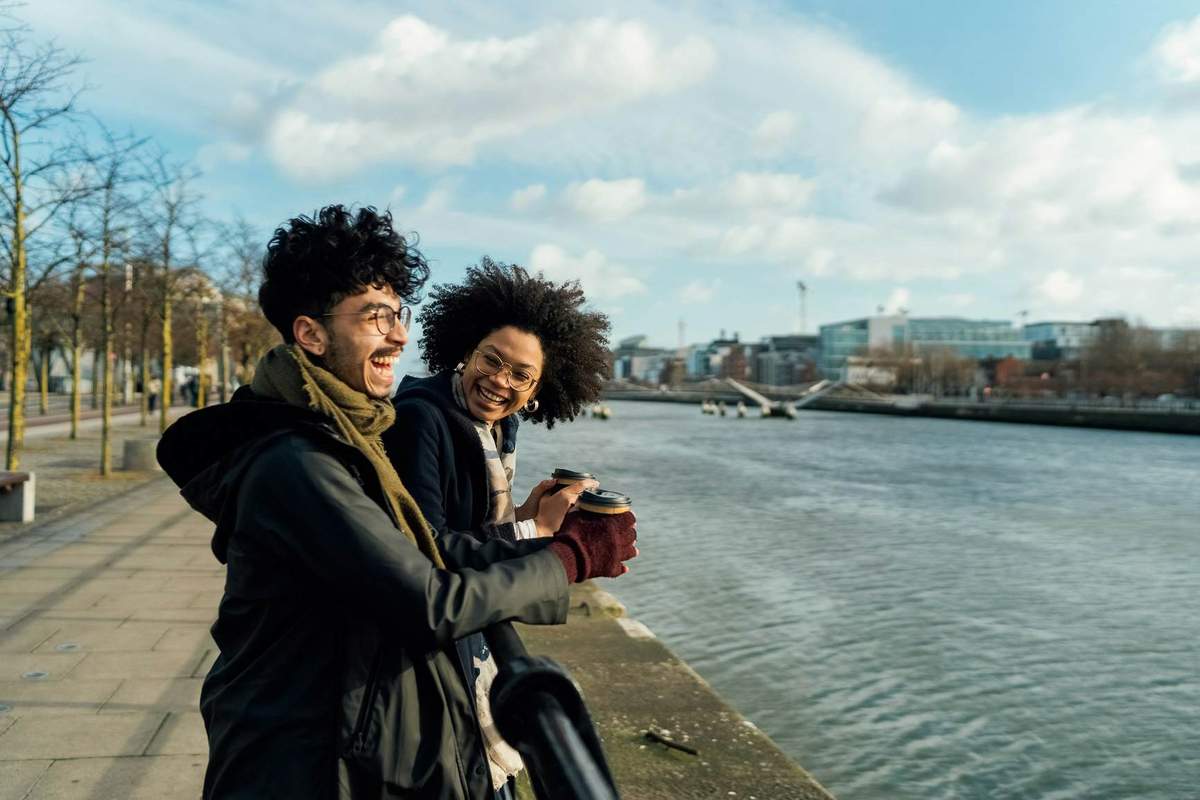
Why Irish people are mocking the worst pints of Guinness in the world
Feb 9, 2021 • 5 min read

There are several key elements to pouring the perfect pint of Guinness © Getty
When Ian Ryan lived in Ireland’s Cork city, he could always get a decent pint of Guinness. But on emigrating to London three years ago, he found himself searching in vain for a well-poured glass of the black stuff.
Sometimes his drink had too much or too little of the white creamy head. Then there were bleak, moribund pints that carried with them an air of tragedy. Nightlife in London was defined by bad Guinness.

Ian began sending photos to friends in Ireland. The rumors, he told them, are true – Guinness is not as good off the island. “There was always a running joke, especially when you’re hanging out with a load of English lads and they’re like ‘oh, is that a good one there?’, and you’re like ‘no’ every time,” he says.
In late 2019, Ian founded the sardonic shitlondonguinness, an Instagram account documenting terrible pints served in England’s capital. Almost immediately, the page attracted thousands of supporters; Ian’s messages were overflowing. ShitLondonGuinness receives 30 to 40 DMs from London alone every Friday, when pubs are open. People all over the world take part as well, from Canada to New Zealand. Last year, an audience of millions learnt of the scourge of bad pints when the Northern Irish actor Jamie Dornan namedropped shitlondonguinness on the Graham Norton Show. The result was around 30,000 new followers in one weekend.
What makes a good pint of Guinness?
A brief explanation: Guinness requires attention and care. The drink should be poured in two parts. First the glass is held at a 45-degree angle until it is just over three quarters full. Then it’s placed to one side to settle; after that it’s topped up while vertical. Things won’t taste right unless the keg is in regular use, with the correct gas pressure. Bar staff who don’t serve a lot of Guinness often aren’t aware of this, which can unfortunately result in the bad pints seen online.

What makes a bad pint of Guinness?
One traumatised drinker, who chose to remain anonymous, saw large plastic pitchers filled with Guinness in a Bremen bar. When Cormac Ahearn visited New York a few years ago, an Italian restaurant served him a tepid affair in a 300ml receptacle, rather than the regulation 567ml pint glass. Rebecca Carrone was mortified by the mixture of Guinness and Kilkenny ale sold by her employer. The name of the drink? A Black and Tan, deriving from a class of infamous British soldiers posted in Ireland during the 1920s.
Contributors to shitlondonguinness are often Irish. Ian pauses for a moment, reflecting on why bad Guinness bothers Ireland: “There’s a part of the Irish psyche where you feel downtrodden and you can consider it nearly a sin against your Irish roots to see a bad pint,” he reflects.

How do I find a good pint of Guinness?
A memorable drink is often about more than taste or presentation. For Guinness Global Head of Quality at St. James's Gate, Steve Gilsenan, pints are always better to an Irish person when they are sitting in a bar in Ireland. The best pints are associated with events, or certain moments. “The Guinness that goes into the can is exactly the same beer – but I would never say it’s the same experience as the pub...,” he explains. “Because it’s not; you’re not in the pub, you’re at home in your living room.”
Bad pints necessitate the existence of good pints, which are abundant, if you know where to look. ShitLondonGuinness has a popular sister account, beautifulpints. While debate about what makes a good pint of Guinness can be contentious, Gilsenan says this is positive: it means drinkers are enthusiastic about the black stuff. That’s certainly true among the Irish – about 90% of the drinks featured in beautifulpints are from Ireland.
Why do Irish people love Guinness?
“What I’ve loved about the job traveling the world is that everyone has an opinion on it; everyone has a view. And particularly Irish [people],” he says. “If you’re going out with two people and they drink Guinness, they will determine where you drink.”
Why do so many Irish people feel a kind of ownership over Guinness? Marketing aside, the company is embedded in the architecture of Ireland’s capital; Guinness built hundreds of houses across Dublin for its employees, many of which still stand today. Yet surely other parts of the world have equal claim to the stout. The UK and Nigeria consume more Guinness than Ireland.
In a 2003 paper for the New Hibernia Review, Pure Genius: Guinness Consumption and Irish Identity, Brenda Murphy says that Guinness has achieved something no typical advertising campaign could dream of: an assigned social history. “It is woven into the fabric of the community and embedded in the daily lives of the consumers and others,” she writes.

Really, Ireland’s fixation with the perfect pint of Guinness is a type of harmless soft nationalism, according to satirist and podcaster Blindboy Boatclub. This is especially common among the diaspora or emigrants, who take pride in promoting products associated with their homeland.
“The idea that the actual quality of Guinness outside of Ireland is drastically different to what you get at home is something we lean into a bit as an act of performance,” says Blindboy, whose work often discusses Irish identity. “In the absence of a national food culture, a pint of plain is your only man.”
You might also like:
Beyond Temple Bar: 10 of Dublin's best pubs
Ireland's top 10 natural wonders
Ireland's most romantic getaways















